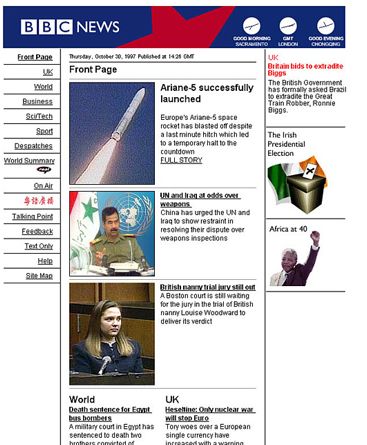I really enjoyed Andrew’s book. I thought I knew about the structure (and structures) of the Internet, but this is is a detailed, critical and fun illumination which quickly proved me mistaken. It’s also a travel book, about an unreal place that spans/permeates real places, lives, spaces. And a wonderful one at that. Highly recommended.
(My emboldening below)
Everything you do online travels through a tube. Inside those tubes (by and large) are glass fibers. Inside those fibers is light. Encoded in that light is, increasingly, us. [Location 94]
The Internet is everywhere; the Internet is nowhere. But indubitably, as invisible as the logical might seem, its physical counterpart is always there. [Location 276]
TeleGeography in Washington was asking a computer science department in Denmark to show how it was connected to a university in Poland. It was like a spotlight in Scandinavia shining on twenty-five hundred different places around the world, and reporting back on the unique reflections. [Location 418]
You can demarcate a place on a map, pinpoint its latitude and longitude with global positioning satellites, and kick the very real dirt of its very real ground. But that’s inevitably going to be only half its story. The other half of the story comes from us, from the stories we tell about a place and our experience of it. [Location 485]
“If you brought a sophisticated customer into the data center and they saw how clean and pretty the place looked—and slick and cyberrific and awesome—it closed deals,” said Adelson. [Location 1211]
But it wasn’t the machine’s mystery or power that terrified Adams most. It was how clearly it signified a “break of continuity,” as he puts it. The dynamo declared that his life had now been lived in two different ages, the ancient and the modern. It made the world new. [Location 1826]
He counted off the zeros on the screen. “This point is the millisecond … this point is the microsecond … and this one is usually expressed as nanoseconds, or billionths of a second.” I mulled all the zeros on the screen for a moment. And when I looked up, everything was different. The cars rushing by outside on Highway 87 seemed filled with millions of computational processes per second—their radios, cell phones, watches, and GPSs buzzing inside of them. Everything around me looked alive in a new way: the desktop PCs, the LCD projector, the door locks, the fire alarms, and the desk lamps. [Location 2045]
Nearly universally, they wore black T-shirts and zip-up hooded sweatshirts, handy for spending long hours on the hard floor of the server rooms, facing the dry exhaust blast of an enormous router.[ocation 2378]
The Internet “cloud,” and even each piece of the cloud, was a real, specific place—an obvious reality that was only strange because of the instantaneity with which we constantly communicate with these places. [Location 3159]
The Internet had no master plan, and—aesthetically speaking—no master hand. There wasn’t an Isambard Kingdom Brunel—the Victorian engineer of Paddington Station and the Great Eastern cable ship—thinking grandly about the way all the pieces fit together, and celebrating their technological accomplishment at every opportunity. On the Internet there were only the places in between, places like this, trying to disappear [location 3183]
The emphasis wasn’t on the journey; the journey pretended not to exist. But obviously it did. [location 3186]
“Want to see how this shit really works?” he asked. “This has nothing to do with clouds. If you blew the ‘cloud’ away, you know what would be there?” Patchett asked. “This. This is the cloud. All of those buildings like this around the planet create the cloud. The cloud is a building. It works like a factory. Bits come in, they get massaged and put together in the right way, then packaged up and sent out. But everybody you see on this site has one job, that’s to keep these servers right here alive at all times.” [location 3268]
“If you lose rural America, you lose your infrastructure and your food. It’s incumbent for us to wire everybody, not just urban America. The 20 percent of the people living on 80 percent of the land will be left behind. Without what rural America provides to urban America, urban America couldn’t exist. And vice versa. We have this partnership.” [location 3299]





